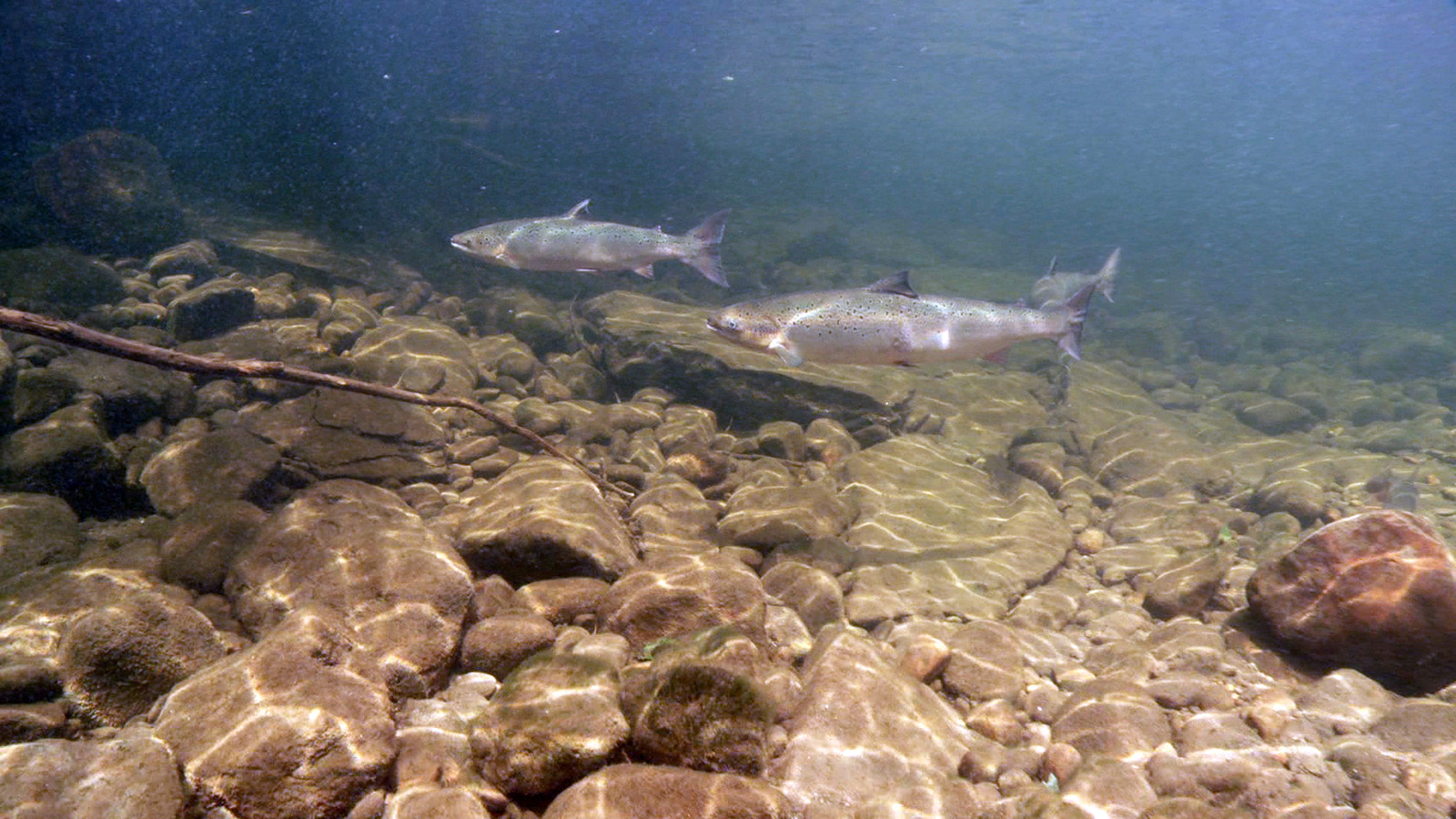
UMaine study shows Penobscot River restoration efforts may benefit both salmon and seals
New research led by the University of Maine finds that river restoration efforts and increasing river herring runs may help lessen the impacts that seals have on salmon. Whole ecosystem restoration may be helping predators and prey alike.
Efforts to restore seal populations in the Gulf of Maine started with federal protections in 1972. Their population growth over the past few decades has at once heartened and concerned conservationists, who want to see seal populations recover, but also worry about the impacts seals can have on other parts of their ecosystem, including their prey.
Seal predation has been a growing concern in the Penobscot River, where restoration efforts have focused on bringing back fish runs for species like the endangered Atlantic salmon that migrate from saltwater to freshwater.
In a study published in the journal Aquatic Conservation: Marine and Freshwater Ecosystems in February 2022, the UMaine School of Marine Sciences, Maine Department of Marine Resources and Maine Sea Grant scientists analyzed data collected since 2012 on injuries that likely came from seals on salmon passing upriver at dams in the Penobscot River. They compared injury rates among salmon of different sizes, sex and age, and also evaluated the relationship between salmon injury rate and the presence of other fish in the estuary, including seasonal timing and magnitude of river herring returns.
“Previous studies have focused on seal abundance and the number of seal-induced injuries detected. By combining multiple long-term data sets, we were able to take a more holistic look at how major river restoration efforts have affected the relationship between seals and salmon in the Penobscot River,” says Lauri Leach, the study’s principal author and 2021 Sea Grant Knauss Fellow.
The analysis showed that seal-induced injuries to salmon declined between 2012 and 2019, coinciding with an increase in river herring and overall estuary fish biomass. The results suggested that even though seal populations in the region are increasing, increasing the river’s forage fish, like river herring, may provide Atlantic salmon with some level of protection from seal predation.
The researchers also found that salmon with a seal-induced injury often had multiple injuries, such as large cuts and wounds caused by lampreys. Although scientists cannot know whether one injury predisposes a salmon to others, the data are evidence that migrating salmon face multiple stressors, not just the hungry pinnipeds.
“We were surprised to see a strong relationship between increasing river herring returns and decreasing seal-induced injury to salmon. Although this finding is encouraging, we also recognize that the injuries we see only represent failed predation attempts. Future research on seal foraging behavior and diet in the Penobscot River estuary is needed to help explain how injury relates to what seals are successfully eating,” says Leach.
The study shows that restoration focused on ecosystem health can benefit multiple species in ecosystems like the Penobscot River and can shift predator-prey interactions in a way that supports restoration and conservation efforts of both predators and prey.
“Though challenging to implement and assess, multi-species or ecosystem-based approaches to management have great potential for widespread benefits, from fish to seals and even human residents and visitors to the region,” says Kristina Cammen, assistant professor at the School of Marine Sciences and co-author of the study.
Contact: Sam Schipani, samantha.schipani@maine.edu
